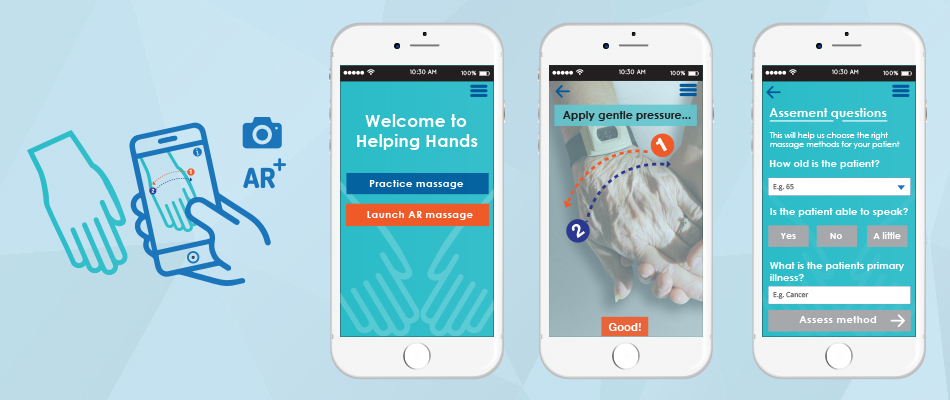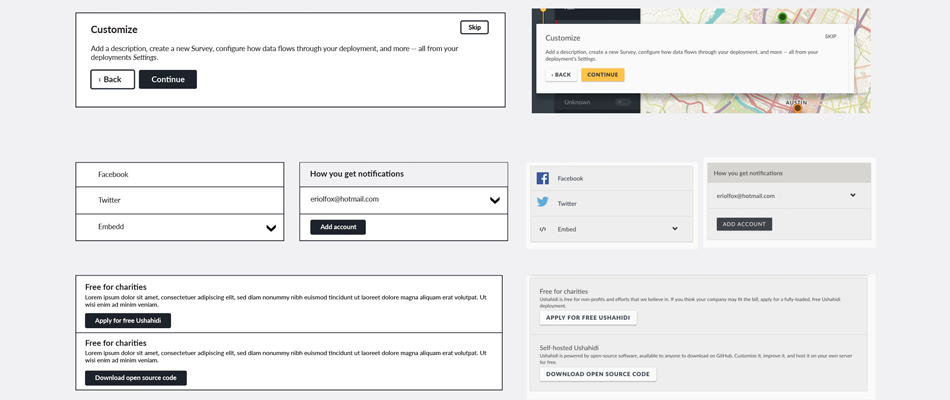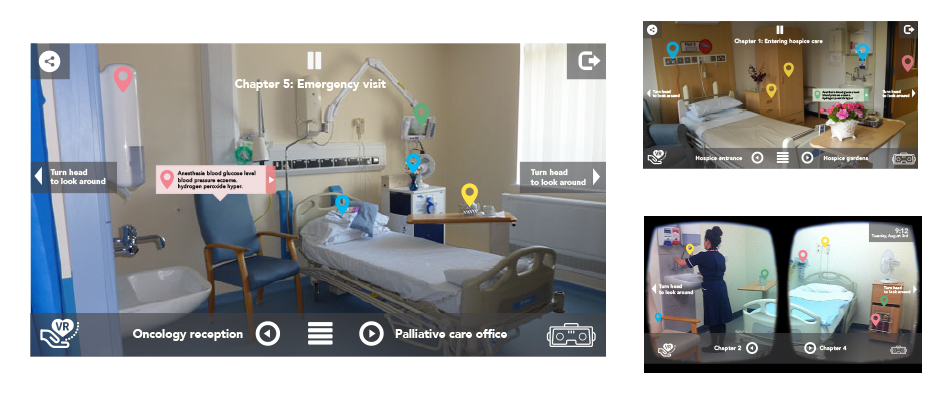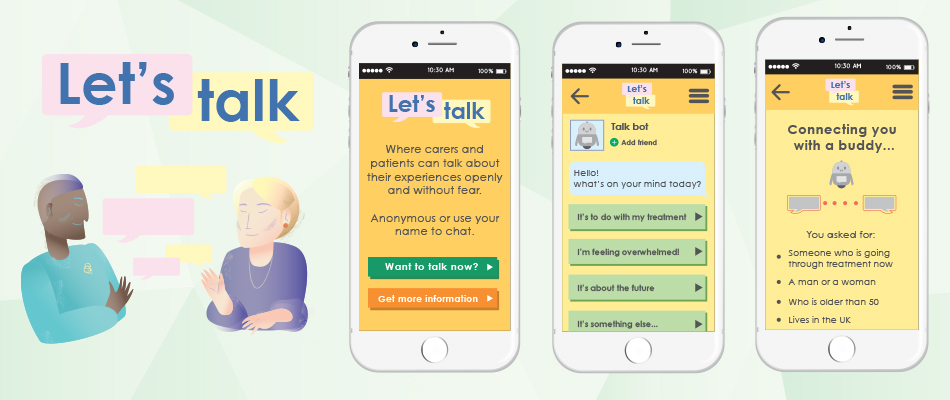Tech and terminal illness
As part of my investigative work into developing products that could help improve user experience of life caring for a person with a terminal illness (or having a terminal illness) I worked on several prototype ideas.
The first prototype was an AR (Augmented reality) product that helps you to perform palliative massage to your loved one or patient. I learnt this technique directly from a hospice nurse but found it difficult to remember after time had passed.
Utilising simulation and then AR the product can be ‘leaned’ on by the user until they are confident of their skills. The tool could also be set for different kinds of patients and teach new skills via updates.
The second prototype was a native phone application that asked very non-invasive questions about how you were feeling and then could suggest actions accordingly.
When you’re ill or caring for an ill person, it’s easy to forget your own physical and mental health, but a lot of apps feel like extra effort in the busy and emotional time. This service would be non-invasive and suggest actions like recording memories and photos when you feel able to, acting somewhat like a digital scrapbook. The tool would also connect you up with people and services when you’re in need of something that a digital service can’t offer.
The third prototype was looking at how VR (virtual reality) can help patients and carers understand the experience of visiting hospitals or hospices without making a long journey. They can investigate areas, items and staff and ‘walk’ around the space to get used to the layout and look.
There could also be stories embedded in this VR experience from patients, carers or staff to humanise and connect with the real life experiences of patients and the care setting.
The final prototype was a service that used both chat bots and a linking service for when people wanted to talk.
Services that connect up people with shared experiences, especially in a terminal illness or carer setting are expensive to run and organise and are often cut. This service would seek to use AI chatbots to find out the kind of support someone may need and then to connect them with a similar person to have a real conversation.
The AI would also be able to step in when emergency services or other official services were appropriate suggestions for the users.
 AR terminal hand massage app
AR terminal hand massage app
 Carers feelings monitoring app
Carers feelings monitoring app
 Ushahidi UI progression
Ushahidi UI progression
 VR Hospice experience
VR Hospice experience
 Talking matching app for carers
Talking matching app for carers